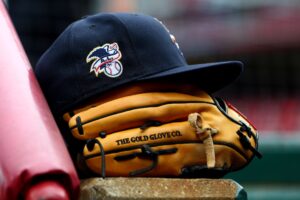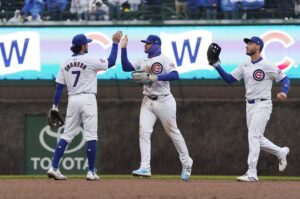No matter where they are on the competitive spectrum, all Major League Baseball teams face challenges. In black and white terms, teams competing for the championship face obstacles rebuilding teams do not. A more nuanced eye can look at each individual team and identify areas to watch throughout the season. Every team has unique obstacles, and the Milwaukee Brewers roster offers no exception.
Milwaukee Brewers Roster Still Needs to Sort Out
Since the hiring of general manager David Stearns, Milwaukee has torn down and started to build back up. It has amassed a top ten farm system when, prior to Stearns, it consistently ranked near the bottom. Former GM Doug Melvin consciously depleted Milwaukee’s minor leagues in a sell-your-soul-to-the-devil move to compete for the World Series trophy (although the championship never came, Melvin’s actions were ultimately the right course). This season, however, the Brewers have options on options on options, at least for most of their positions outside of the starting rotation. That’s why the Brewers roster still needs to sort itself out.
Promise Versus Production
Things have a way of working themselves out sometimes: an injury, a trade offer that’s too good to turn down, etc. Other times, the line in the sand isn’t so obvious. When operating a rebuilding team, it’s crucial to make the right moves at the right times. The margin between the right and wrong time can often be paper thin. A team must have patience without setting a player up to fail, a willingness to accept failure while resisting a knee-jerk reaction to bench or send a player down, and an open mind about possibilities with a focused view of the future.
The outfield is loaded with talent. As it stands, the big league club is comprised of Ryan Braun, Keon Broxton, Domingo Santana, and Kirk Nieuwenhuis. Hernan Perez is listed as an infielder, but he’s capable of manning an outfield spot (and has already this season). The next line of men who stand out in the grass consists of Lewis Brinson, Michael Reed, and Brett Phillips, among others. Sometime this season, Braun could get traded and Nieuwenhuis might prove expendable, opening up two spots. It’s still complicated, though.
If, say, Broxton or Santana struggle, what does Milwaukee do? Sending a player down after he achieved his lifelong goal of making it to the bigs can prove demoralizing. So can allowing that player to continue to fail at the big league level. The decision is only made more complex when considering you’d have trouble cutting the difference in talent among all those outfielders with a razor blade (outside of Braun, who’s obviously the best and most proven). All of their skill sets are different and unique, and at this point, all look to be capable of about the same production.
Willingness to Deal
As a rebuilding team, the Brewers are in a position to listen to any and all trade offers. That’s not to say they should automatically accept any offer, but, rather, that at some point something (or somebody) is going to have to give. Milwaukee’s roster is lopsided. There’s too much talent to play at some positions, and not enough to feel comfortable about at others.
If it seems too easy to offer up an extra outfielder to bolster the starting rotation, that’s because it is. Of any aspect of baseball, teams are most reluctant to trade top-end pitching prospects.
Non-pitching prospects are frequently involved in trades while their pitching counterparts are not. There’s easily a half dozen position players that could develop into superstars who have already switched teams via trade… some multiple times (Wil Myers, Trea Turner, Addison Russell, and Yoan Moncada, among others), whereas teams tend to hang on to their young pitching. It takes a great deal of comfort for a team to decide that pitching is a position of strength (such as the Nationals dealing Lucas Giolito and others to the Chicago White Sox for Adam Eaton). Much more common is the pitcher who’s dealt toward the end of his rookie contract. That’s something the Brewers would want no part of, anyway.
The Future Depends on the Now
If Milwaukee does not properly evaluate the players in its own locker room, they’re ill-equipped to evaluate talent on other teams when the time comes for trades. The actions of the present will directly correlate to success or failure in the future. In that context, rebuilding a Major League Baseball team is much more complicated than just getting rid of old players so you can play the young ones and cross your fingers. Sacrificing the now for the betterment of the future takes nuance and savvy.
The Brewers roster has the talent to eventually turn into a contender. The foundation is in place. But, like any foundation, it will either provide the future with stability, or everything will crumble around it. Stearns and the rest of the Brewers brass must find the right combination of players to keep, trades to make, and draft picks to make sure the foundation holds while they continue to build around it. Future success will not (and cannot) happen on its own. It must begin to take shape now.
Main Photo:






